
Mecklenburg is a historical region in northern Germany comprising the western and larger part of the federal-state Mecklenburg-Vorpommern. The largest cities of the region are Rostock, Schwerin, Neubrandenburg, Wismar and Güstrow.
A duke (male) can either be a monarch ranked below the emperor, king, and grand duke ruling over a duchy or a member of royalty or nobility, historically of highest rank, below princes of nobility and grand dukes. The title comes from French duc, itself from the Latin dux, 'leader', a term used in republican Rome to refer to a military commander without an official rank, and later coming to mean the leading military commander of a province. In most countries, the word duchess is the female equivalent. However, in some countries, the term duke is used even for females, and the word duchess is reserved for those who marry dukes.
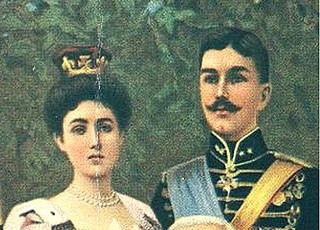
A duchy is a medieval country, territory, fief, or domain ruled by a duke or duchess, a high-ranking nobleman hierarchically second to the king or queen in European tradition. The term is used almost exclusively in Europe, where in the present day there is no sovereign duchy left.
A grand duchy is a country or territory whose official head of state or ruler is a monarch bearing the title of grand duke or grand duchess.

The Grand Duke of Luxembourg is the monarchical head of state of Luxembourg. Luxembourg has been a grand duchy since 15 March 1815, when it was created from territory of the former Duchy of Luxembourg. It was in personal union with the United Kingdom of the Netherlands until 1890 under the House of Orange-Nassau. Luxembourg is the world's only sovereign grand duchy and since 1815, there have been nine monarchs, including the incumbent, Henri.

The Duchy of Modena and Reggio was a small northwestern Italian state that existed from 1452 to 1859, with a break during the Napoleonic Wars (1796–1814) when Emperor Napoleon I reorganized the states and republics of renaissance-era Italy, then under the domination of his French Empire. It was ruled from 1814 by the noble House of Este, of Austria-Este.

The Grand Duchy of Tuscany was a central Italian monarchy that existed, with interruptions, from 1569 to 1859, replacing the Duchy of Florence. The grand duchy's capital was Florence. Tuscany was nominally a state of the Holy Roman Empire until the Treaty of Campo Formio in 1797.

Archduke Ferdinand Karl of Austria-Este was a son of Holy Roman Emperor Franz I and Maria Theresa of Austria. He was the founder of the House of Austria-Este and Governor of the Duchy of Milan between 1765 and 1796. He was also designated as the heir to the Duchy of Modena and Reggio, but he never reigned, owing to the Napoleonic Wars.
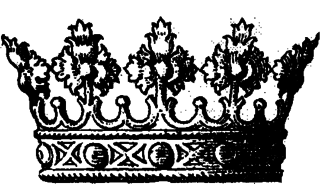
Il Duca di Firenze, rendered in English as The Duke of Florence, was a title created in 1532 by Pope Clement VII. There were effectively only two dukes, Alessandro de' Medici and Cosimo de' Medici, the second duke being elevated to The Grand Duke of Tuscany, causing the Florentine title to become subordinate to the greater Tuscan title.

The Grand Duchy of Kraków was created after the incorporation of the Free City of Cracow into Austria on 16 November 1846. From 1846 to 1918 the title, Grand Duke of Kraków, was part of the official titulary of the Emperor of Austria.

The Duchy of Florence was an Italian principality that was centred on the city of Florence, in Tuscany, Italy. The duchy was founded after Emperor Charles V restored Medici rule to Florence in 1530. Pope Clement VII, himself a Medici, appointed his relative Alessandro de' Medici as Duke of the Florentine Republic, thereby transforming the Republic of Florence into a hereditary monarchy.
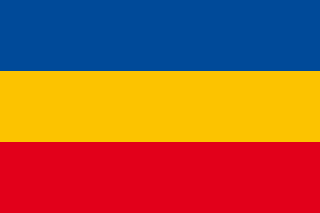
The Grand Duchy of Mecklenburg-Schwerin was a territory in Northern Germany held by the House of Mecklenburg residing at Schwerin. It was a sovereign member state of the German Confederation and became a federated state of the North German Confederation and finally of the German Empire in 1871.

The Grand Duchy of Mecklenburg-Strelitz was a territory in Northern Germany, held by the younger line of the House of Mecklenburg residing in Neustrelitz. Like the neighbouring Grand Duchy of Mecklenburg-Schwerin, it was a sovereign member state of the German Confederation and became a federated state of the North German Confederation and finally of the German Empire upon the unification of 1871. After World War I and the German Revolution of 1918–19 it was succeeded by the Free State of Mecklenburg-Strelitz.

The Grand Duchy of Hesse and by Rhine was a grand duchy in western Germany that existed from 1806 to the end of the German Empire in 1918. The grand duchy originally formed on the basis of the Landgraviate of Hesse-Darmstadt in 1806 as the Grand Duchy of Hesse. After the end of the Napoleonic Wars in 1815, it changed its name in 1816 to distinguish itself from the Electorate of Hesse, which had formed from neighboring Hesse-Kassel. Colloquially, the grand duchy continued to be known by its former name of Hesse-Darmstadt. It joined the German Empire in 1871 and became a republic after German defeat in World War I in 1918.
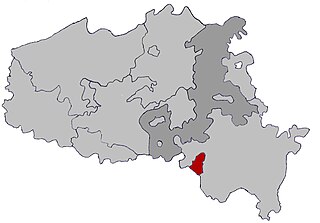
The Republic of Bouillon was a short-lived French client republic, around the city of Bouillon in present-day Belgium, based on the duchy of Bouillon, which had existed between France and the Austrian Netherlands since the 15th century. Reforms, sponsored by the duke, abolishing manorialism and feudalism and establishing a constitutional basis for the monarchy did not prevent what many sources describe as the proclamation of a republic in April 1794. The republic was short-lived, however, as the territory was annexed by the French First Republic 18 months later. In 1815, after the Napoleonic Wars, the duchy was absorbed into the promoted Grand Duchy of Luxembourg, becoming a part of Belgium when that nation was founded in the 1830s.
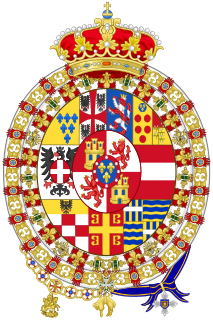
The House of Bourbon-Parma is a cadet branch of the Spanish royal family, whose members once ruled as King of Etruria and as Duke of Parma and Piacenza, Guastalla, and Lucca. The House descended from the French Capetian dynasty in male line. Its name of Bourbon-Parma comes from the main name (Bourbon) and the other (Parma) from the title of Duke of Parma. The title was held by the Spanish Bourbons as the founder was the great-grandson of Duke Ranuccio II Farnese, Duke of Parma.
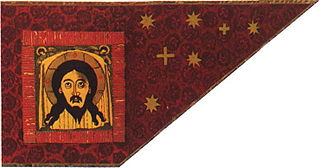
The Grand Duchy of Moscow or Grand Principality of Moscow was a Rus' principality of the Late Middle Ages centered around Moscow, and the predecessor state of the Tsardom of Russia in the early modern period.

Mattias de' Medici was the third son of Grand Duke Cosimo II de' Medici of Tuscany and Archduchess Maria Maddalena of Austria. He was governor of Siena, with interruptions, from 1629. He never married.
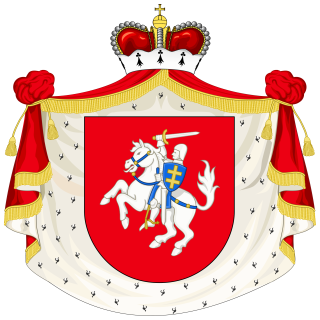
The Olelkovich family was a 15th–16th-century princely family from the Grand Duchy of Lithuania. Their main possession was the Duchy of Slutsk–Kapyl. They are sometimes known as Slutsky. They were descended from the Lithuanian Gediminids and Ruthenian Rurikids. According to the 1528 military census, the family was the fourth wealthiest magnate family in the Grand Duchy. However, its influence declined after the Union of Lublin (1569). The last member of the family was Sophia Olelkovich Radziwill (1585–1612), wife of Janusz Radziwiłł. She was elevated to sainthood in the Eastern Orthodox Church in 1983. As part of her marriage negotiations, she insisted on remaining a member of the Eastern Orthodox Church, despite her future husband's allegiance to Calvinism. She died in childbirth, as did the child. After her death, her considerable wealth and the Duchy of Slutsk passed to the Radziwiłł family.

The Grand Duchy of Baden was a state in the southwest German Empire on the east bank of the Rhine. It existed between 1806 and 1918.